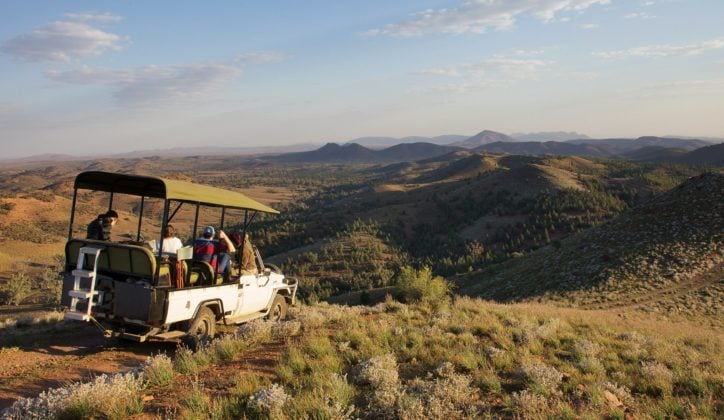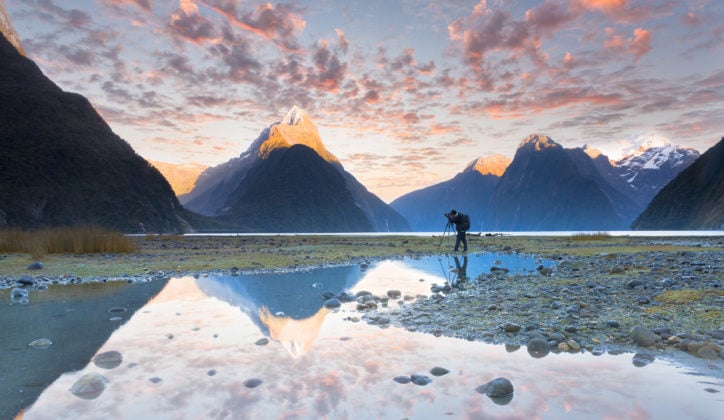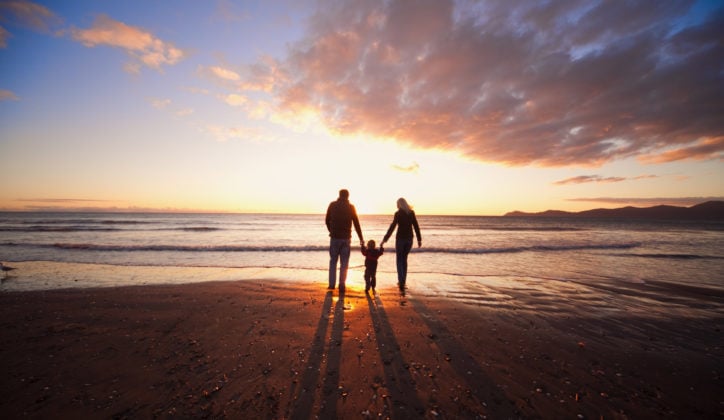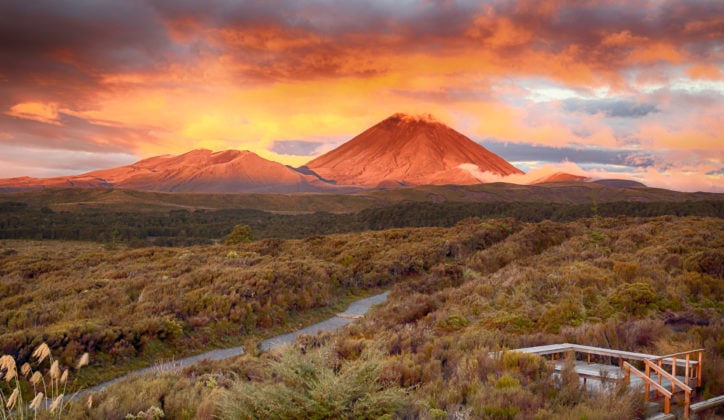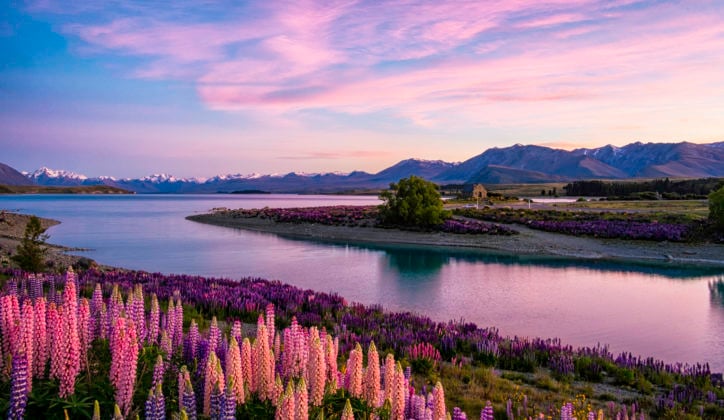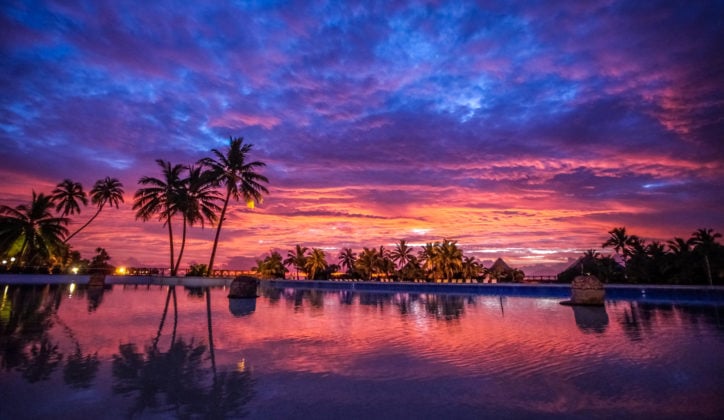Published on: January 10th, 2024
Last modified: April 19th, 2024
New Zealand is a dream destination for outdoor explorers and animal lovers. This island nation in Australasia is bursting with beautiful natural habitats, rare native species and opportunities to encounter them in a responsible way, through experiences that prioritise their protection.
In New Zealand, wildlife is everywhere you look – whether you’re exploring its dramatic mountain peaks, dazzling coastlines, glimmering glaciers or subterranean caves. You can find exceptional wildlife experiences across the rugged South Island
and diverse North Island, from the country’s most remote corners to cosmopolitan cities like Auckland and Wellington.
With that in mind, we’ve selected nine of the most awe-inspiring, sustainable and all-around best wildlife experiences in the ‘Land of the Long White Cloud.’ Each one will allow you to observe wild animals in New Zealand up close – without disturbing them or the magnificent ecosystems that they call home.
New Zealand’s Wildlife
New Zealand’s animals range from the most miniscule creatures to some of the world’s largest. Here you’ll find fascinating birds like penguins, kiwis, kea and gannets; several species of dolphins and whales; and even bioluminescent, cave-dwelling glowworms. Other notable native species include the tīeke, kākāriki, hihi and Northern Royal Albatross.
1. Visit Zealandia in Wellington
The capital city of Wellington is where you’ll find one of the best wildlife sanctuaries in New Zealand. Zealandia, the first fully fenced urban ecosanctuary on earth, shelters some of the country’s rarest and most critically endangered species – especially birds.

Keep an eye out for the tīeke, or saddleback, and the kākā, both of which are recovering from near extinction thanks to the sanctuary’s work. You can also see the hihi, or stitchbird; kākāriki, or red-crowned parakeet; and little spotted kiwi, the smallest kiwi species.
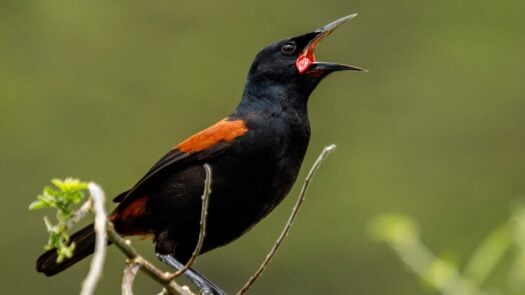
2. Spot Dolphins in Kaikōura
New Zealand is home to nine different species of dolphin, ranging from friendly bottlenose dolphins to orcas (which are technically dolphins, not whales). It’s also the only place on earth where you’ll find the rare Hector’s dolphin and Māui subspecies.

Although there are dolphins all over New Zealand, we suggest visiting Kaikōura on the South Island’s eastern coast for unforgettable wildlife encounters. Here you can see dusky dolphins, known for their dark backs and white bellies, year round (though October to May is ideal).

Go Whale Watching in Auckland
Auckland may be New Zealand’s largest city, but it’s still incredibly close to nature. The waters off its coast are protected by the Hauraki Gulf Marine Park, encompassing dozens of islands and six marine reserves. It’s also one of the best places for whale watching in New Zealand.

Step aboard a small boat and head out to sea in search of the endangered Bryde’s whale, which is a common sighting. You might also spot humpback whales, blue whales, southern right whales and others, as well as various species of dolphin.

4. Marvel at Glowworms in the Waitomo Caves
One of the most unique animals in New Zealand has to be the Arachnocampa luminosa, or glowworm. Technically a fungus gnat, this native species literally glows in the dark with bluish-green bioluminescence.

You can see New Zealand’s glowworms in the underground caves of Waitomo, near Rotorua and Taupo. We can arrange a guided visit complete with a subterranean boat ride illuminated by thousands of these brilliant creatures.

5. Meet Newly Hatched Kiwi Chicks in Rotorua and Taupo
If you’ve ever wondered why New Zealand natives are called ‘Kiwis’, you’ll find the answer just outside of Rotorua at the National Kiwi Hatchery. This conservation centre is working hard to support the islands’ population of native kiwi birds, which are a beloved national icon.

Tour the hatchery to see adorable newborn kiwi chicks and learn more about this fascinating flightless bird. You can even go behind the scenes to see how the centre incubates the eggs and cares for the chicks once they hatch.

6. See the Royal Albatross in Dunedin
Located at the tip of the Otago Peninsula near the vibrant town of Dunedin, the Royal Albatross Centre is dedicated to the protection of this majestic seabird. It boasts the world’s only mainland breeding colony for the Northern Royal Albatross.

6. See the Royal Albatross in Dunedin
Here you can choose from a variety of tours focusing on these beautiful birds and the site itself, which also has historical importance as a military outpost. You’ll get to witness albatrosses in the wild from an exclusive observatory, and maybe even see some chicks.

7. Take a Penguin Tour in Christchurch
There are three species of penguin in New Zealand: the yellow-eyed penguin, the Fiordland crested penguin and the little blue penguin, which is the smallest in the world. You can see the little blue penguin by embarking on a penguin tour from Christchurch, the South Island’s largest city.

You’ll visit the Pōhatu penguin colony to learn about monitoring and conservation efforts, and observe the tiny animals and their nesting sites from a respectful distance. Or head farther south to the Otago Peninsula to see rare yellow-eyed penguins in the wild.

8. Watch a Kea Causing Mischief on the West Coast
In addition to being one of the best places to hike in New Zealand, the western coast of the South Island is home to some of the country’s rarest birds. Among them is the kea, the world’s only alpine parrot, which is legendary for its sharp intelligence and mischievous behaviour.

You might spot a kea amidst the soaring peaks of Arthur’s Pass. If you do, make sure to give it space – and watch out for your belongings. You can also report sightings to the Department of Conservation to support its recovery programme for this endangered species.

9. Visit the Cape Kidnappers Gannet Colony in Hawke’s Bay
The North Island is renowned for its bountiful vineyards and orchards, many of which are concentrated in the sunny region of Hawke’s Bay. This is also where you’ll find Cape Kidnappers, a headland that’s home to the world’s largest colony of gannets.
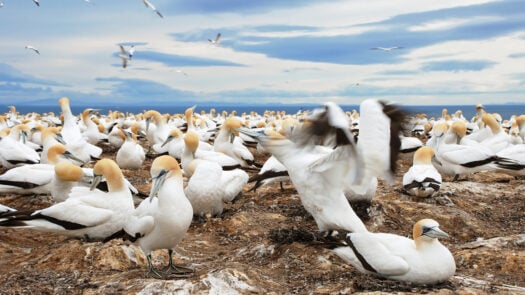
Gannets are large white seabirds with yellow heads and blue eggs. They nest on Cape Kidnappers between November and February (summer in the Southern Hemisphere), so if you’re visiting New Zealand at this time of year, it’s worth making the trek out to see them.
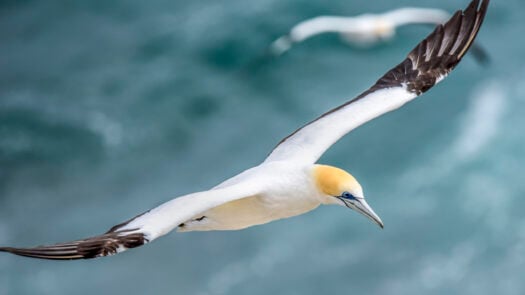
Embark on a journey to New Zealand
Ready to explore the beauty and unique wildlife of New Zealand? Our travel experts will design a bespoke journey that aligns perfectly with your idea of adventure.



